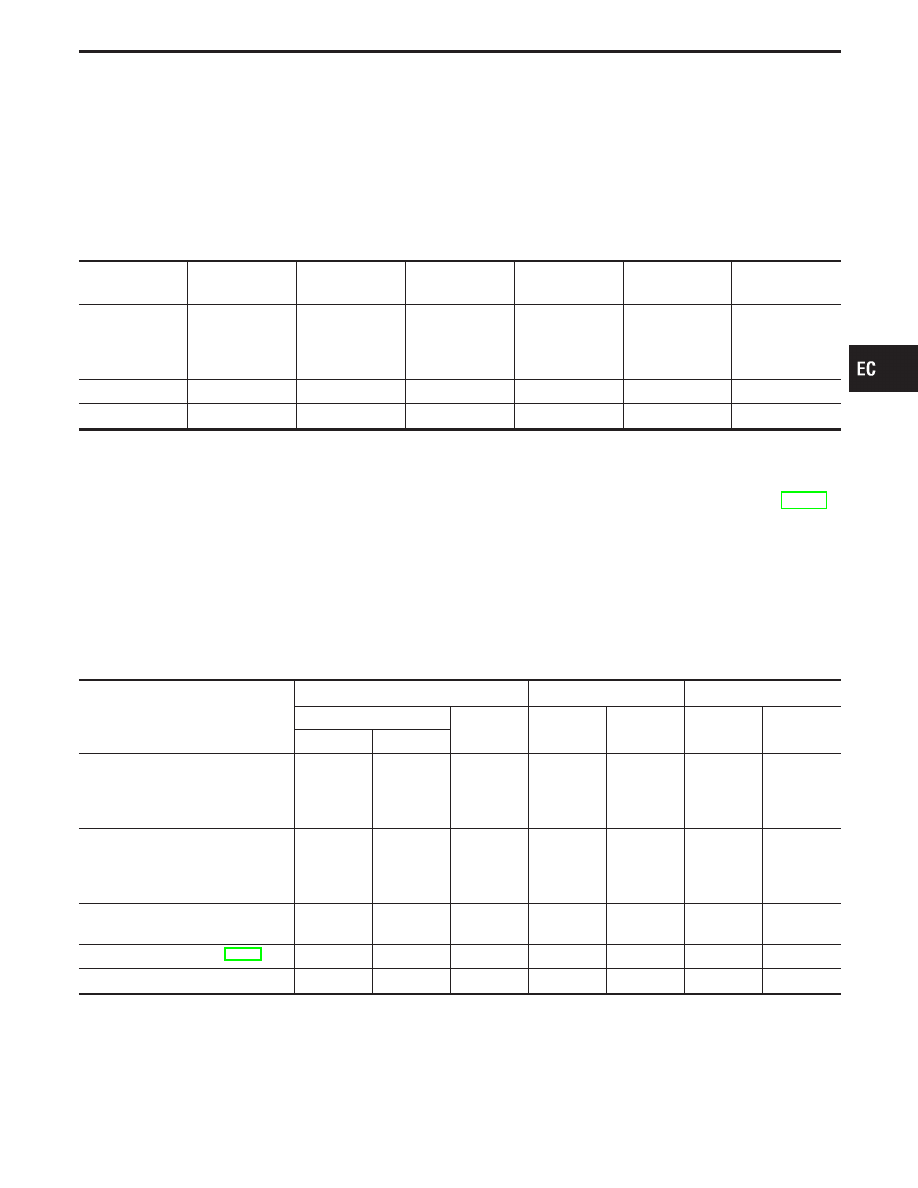Infiniti Q45 (FY33). Manual - part 130

Introduction
The ECM has an on board diagnostic system, which detects malfunctions related to engine sensors or actua-
tors. The ECM also records various emission-related diagnostic information including:
I
Diagnostic Trouble Code (DTC) .................................................................................Mode 3 of SAE J1979
I
Freeze Frame data .....................................................................................................Mode 2 of SAE J1979
I
System Readiness Test (SRT) code ..........................................................................Mode 1 of SAE J1979
I
1st Trip Diagnostic Trouble Code (1st Trip DTC) .......................................................Mode 7 of SAE J1979
I
1st Trip Freeze Frame data
I
Test values and Test limits .........................................................................................Mode 6 of SAE J1979
The above information can be checked using procedures listed in the table below.
DTC
1st trip DTC
Freeze Frame
data
1st trip Freeze
Frame data
SRT code
Test value
Diagnostic test
mode II (Self-
diagnostic
results)
X
X*1
—
—
—
—
CONSULT-II
X
X
X
X
X
—
GST
X
X*2
X
—
X
X
*1: When DTC and 1st trip DTC simultaneously appear on the display, they cannot be clearly distinguished from each other.
*2: 1st trip DTCs for self-diagnoses concerning SRT items cannot be shown on the GST display.
The malfunction indicator lamp (MIL) on the instrument panel lights up when the same malfunction is detected
in two consecutive trips (Two trip detection logic), or when the ECM enters fail-safe mode (Refer to EC-98.).
Two Trip Detection Logic
When a malfunction is detected for the first time, 1st trip DTC and 1st trip Freeze Frame data are stored in
the ECM memory. The MIL will not light up at this stage. <1st trip>
If the same malfunction is detected again during the next drive, the DTC and Freeze Frame data are stored
in the ECM memory, and the MIL lights up. The MIL lights up at the same time when the DTC is stored. <2nd
trip> The “trip” in the “Two Trip Detection Logic” means a driving mode in which self-diagnosis is performed
during vehicle operation. Specific on board diagnostic items will cause the ECM to light up or blink the MIL
and store DTC and Freeze Frame data, even in the 1st trip, as shown below.
Items
MIL
DTC
1st trip DTC
1st trip
2nd trip
lighting up
1st trip
displaying
2nd trip
displaying
1st trip
displaying
2nd trip
displaying
Blinking
Lighting up
Misfire (Possible three way catalyst
damage)
— DTC: P0300 - P0308 (0701,
0608 - 0601) is being detected
X
—
—
X
—
X
—
Misfire (Possible three way catalyst
damage)
— DTC: P0300 - P0308 (0701,
0608 - 0601) has been detected
—
X
—
X
—
X
—
Closed loop control — DTC: P1148
(0307), P1168 (0308)
—
X
—
X
—
X
—
Fail-safe items (Refer to EC-98.)
—
X
X*1
—
X*1
—
Except above
—
—
X
X
X
X
*1: Except “ECM”.
GI
MA
EM
LC
FE
AT
PD
FA
RA
BR
ST
RS
BT
HA
EL
IDX
ON BOARD DIAGNOSTIC SYSTEM DESCRIPTION
EC-49